Cambodia. The water of the Mekong and the monsoons.
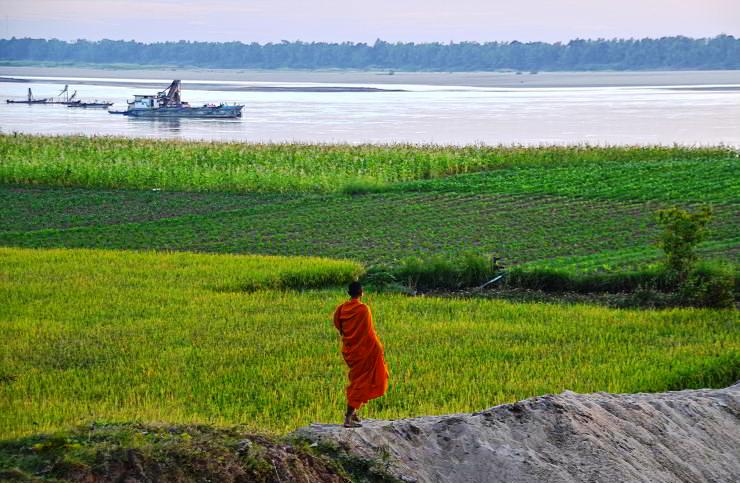
Contact with nature is omnipresent in the culture and the local population. The country still has a predominantly rural identity, although development and its consequences are changing the direct relationship with nature. Cultural notes.
In the cities of Cambodia and, in particular, in the capital Phnom Penh, which is becoming a true modern megalopolis, the relationship with nature is reduced to plants that are grown at home or in the (few) public gardens. In rural areas, however, contact with nature is part of daily life: rivers, large rice fields, bamboo forests and fruit trees are everywhere, always central to people’s daily lives.
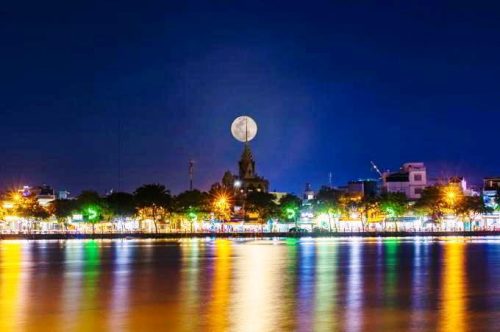
The capital Phnom Penh is a true modern megalopolis. Pixabay
Water, in particular, is the main element due to the presence of the great Mekong River. One of the largest in the world. It starts in the Himalayas, crosses China, forms the border between Thailand and Laos, passes through Cambodia and Vietnam and then flows into the ocean.
The water of the Mekong, in addition to being important for fishing, with its floods that overflow is vital for the rice cultivation cycle.
Rice: the fundamental food.
In the Cambodian language when they ask you if you have eaten, the question is: “Have you eaten rice yet?”. If the water from the Mekong doesn’t reach the rice paddies, then it’s a tragedy. It then has to be pumped, but that comes at a high price. When it does arrive, then there’s a big sigh of relief. Towards the end of the rainy season, when the level of the Mekong has already risen enough, a frequent question is: “Has the water already flooded your rice paddy?”.
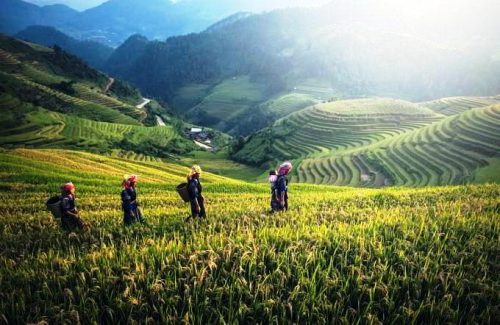
Rice field. In Cambodia, rice is the staple food. PIabay
During the rainy season, a lot of water falls, with monsoons that pour it down not just in buckets, but in real waterfalls. Life changes in those months. Travel becomes more difficult because of the mud that is created. When it rains hard and for a long time, no one goes out of the house. Children, however, do go out, especially when the first monsoons arrive. They immediately go out in the rain to dance and sing. For them, it’s a celebration. They have a great time. Until their mothers take turns to take them back and scold them that this way, they will get sick, not to do it again, etc, but these are empty words because with the next big monsoon, the scene repeats itself.
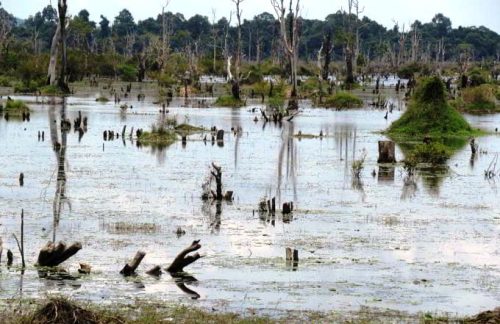
A frequent question is: “Has the water already flooded your rice paddy?”. Pixabay
Their threats certainly have more effect regarding the danger of the waters of the Mekong. To scare them not to go too far out or to swim when it is already dark, every good mother tells her children about threatening crocodiles or evil spirits that are just waiting to eat disobedient children. These are legends made up to avoid bad accidents, especially when towards the end of the working day, before sunset, people go down to the river to swim: men and animals together,
cows in particular.
The tree, the place of Spirits
Spirits do not only inhabit the treacherous waters of the Mekong but also the rest of nature. Especially the large trees, often considered places of spirits. Sometimes they are covered and decorated with long coloured cloths, with small altars at their feet where incense burns as a sign of veneration. Unfortunately, this presence of spirits in nature is more a source of fear than respect.
The spirit of the tree is indulged with ceremonies and prayers to keep bad spirits away. Even the mountains, which in Cambodia are mostly hills that suddenly emerge from the plain, are often special places, linked to ancient legends that tell of their birth and explain their shape.
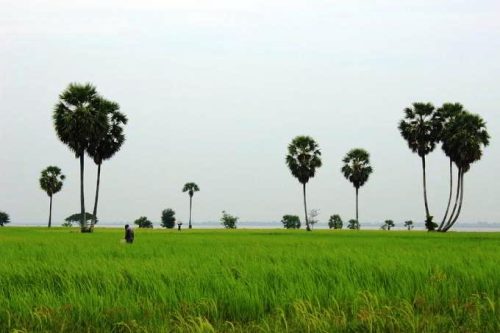
The large trees are often considered places of spirits. Pixabay
Stories of elephants that petrified themselves, creating a promontory, stories of challenges between divinities or between men, such as the one between males and females that gave birth to the “Phnom Proh – Phnom Srey” (or “Mountain of men – Mountain of women”): two hills that stand next to each other and whose history is well known in Cambodia. It is said that to decide who had the duty to ask for the hand first and bring the dowry of the wedding, males and females competed in a competition to build the highest mountain. In the end, the females won. In fact, in Cambodia, it is the men who must ask for the hand of the future bride and reimburse her family with a suitable dowry. Also, in Cambodia, the highest peaks, like Phnom Srey, are often inhabited by monks who seek in those places a life more in tune with themselves, others and nature. There are places where people climb in search of peace because Heaven is closer. (Photo: Buddhist monk walking on the bank of the Mekong River. 123rf)
Luca Bolelli/PM



